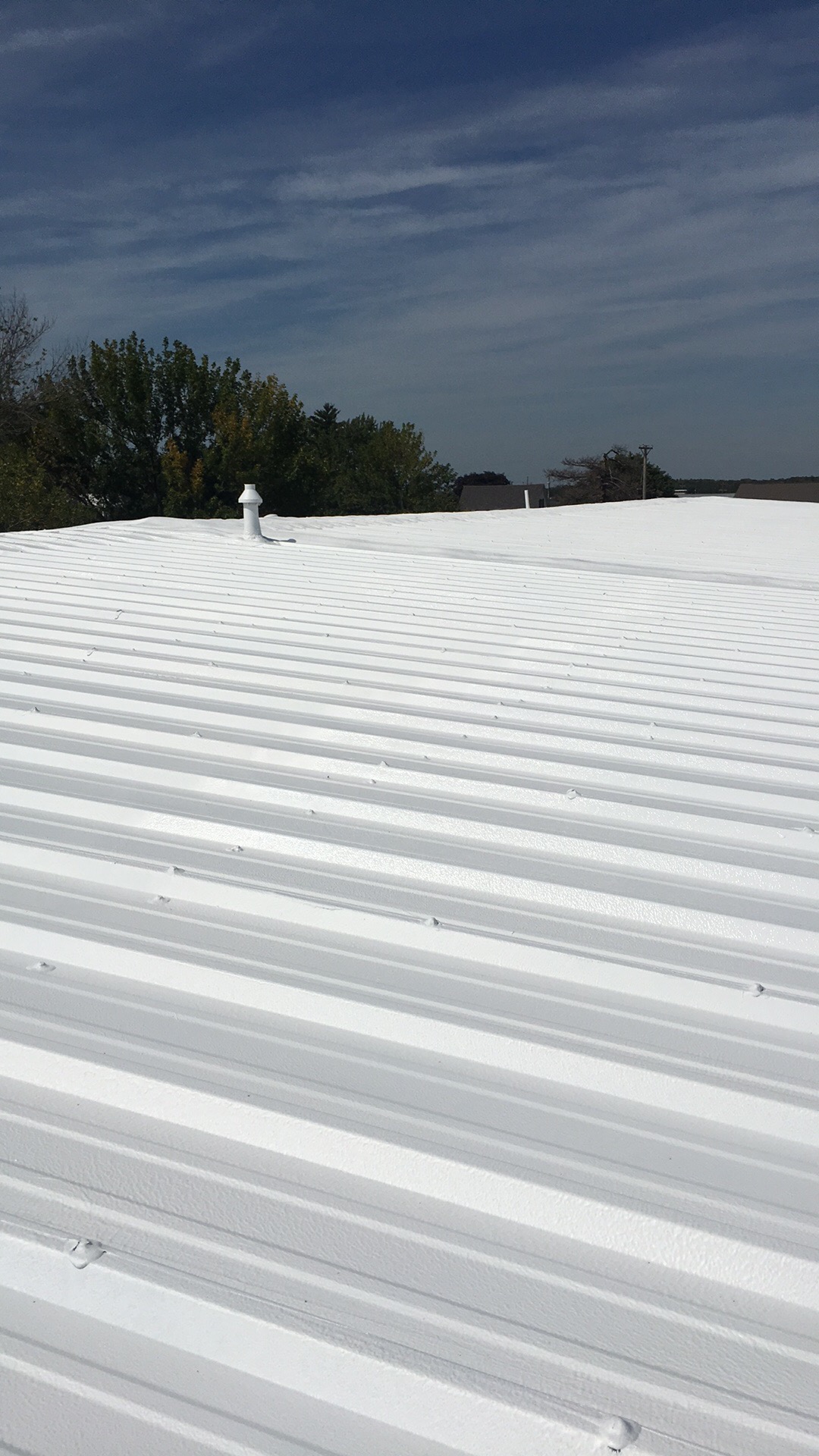That’s a great question. Let’s dig deeper…
Eco-Friendliness and Sustainability
First, the thought of not taking a roof off and putting it into a landfill for it to be there for the rest of our life, plus our kids’ lives is reason enough on it’s own. Fluid Applied Restoration allows a roofing system to be salvaged or restored prior to that condition. That does mean that property managers & building owners need to pay attention and do progressive roof maintenance. Better yet, they could get their buildings involved in a roof maintenance program which allows them to stay ahead of the ball, savings them lots of money in the lifecycle of that roof. We need to educate building owners to pursue that level of thinking.
If a building owner or facilities manager stays on the progressive front, and they use a quality fluid applied roofing system, they can easily extend an additional 10, 15, 20, 30+ years to that building’s roof without having to do a costly tear off and expose themselves to a high liability.
Energy Efficiency
Additionally, when highly populated areas start turning more of their dark heat absorbing roofs into white reflective cool roofs, there is a heat reduction in what is known as the “urban heat island effect”. This will actually benefit an entire community when there is buy in from everyone.
Economics
Another reason the Fluid Applied Industry is growing, is economics. Fluid applied coating systems not only add to that cool roof concept but they are less cost because the building owner is not paying the labor that’s involved with all of the other traditional roofing systems, not to mention not paying for the tear off, labor and disposal.
So they are economically and environmentally good choices for maintaining a building and have traditionally always been a tax advantage because of the opportunity for a complete year one write off in most instances.
Spray Polyurethane Foam = Added R-Value
If you are to toss spray polyurethane foam into the restoration or fluid applied industry as an option you also get the additional R-value and return on investment from cooling and heating savings that come along with that.
We have to face the fact that energy cost are no longer going to be cheap and they are going to continue to increase in the future, unless grave measures are taken to find alternative methods to reduce energy costs. If building owners as a whole can reduce the amount of energy used for the cooling load of their buildings by using highly reflective cool white roofs it’s a benefit to everyone.
Technology
Another reason why the Fluid applied industry is growing is because of technology. The technology advancements that have happened in the traditional roofing systems have also advanced in the coatings industry & have substantially reduced some of the issues that plagued the industry & led to those early coating failures we have all heard of.
Custom, Tailored Roofing Solutions
Next reason is because of the options available to suit a building’s existing substrate. The big three acrylic’s, silicone and urethane’s give roofing contractors an opportunity to make a selection that can be custom tailored to their clients needs.
Let’s say you have a industrial client that has a low sloped 1/2:12 pitch to 3:12+ pitch metal roof: acrylic systems have proven themselves for decades to do great on these existing substrates. Silicones and urethanes will also serve these roofing substrate but can come with some unwanted additional baggage as in they are typically higher cost then a quality acrylic and they are harder to apply & have more chances of overspray concerns. When it comes to silicone it can be extremely slick when any moisture is present so rooftop foot traffic can become more of a liability.
Turn the tables and low slope or flat roofs under 1/2:12 or less (that have a chance of ponding water or slow dry times) lean more towards the silicone and urethane chemistries. Acrylics will take on water so they are more likely to loose adhesion in ponding water areas. Their counterparts silicone & Urethane are hydrophobic and actually repel water so they hold up better long-term in standing water.
Smaller Install Crews/Lower Labor Costs
A reason that is often overlooked in the industry is something that is plaguing all of the trades and that is a shortage of qualified labor. Your traditional single ply roofing companies, employee 8-10 to upwards of 15 employees to do jobs of any size whereas a fluid applied roofing system can easily be installed with half the labor or less, where a common crew size is 3 to 5 man crews.
Fluid applied roofing is going to continue to grow for the foreseeable future. 2017-2018 growth was great, but 2019 & on it will be exponential. The companies that react first will be the dominant ones in the industry as it begins to explode.
Chad Hedrick, Roof Coating Life
“We Bleed White”

